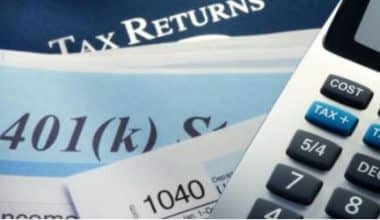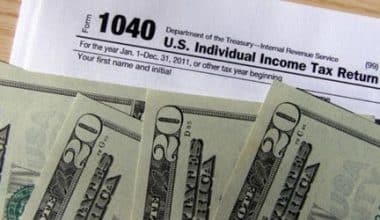The Research & Development Tax Credit is a federal incentive that lets companies pay less in income taxes for the current tax year and get a refund on taxes paid over the past three years. This article talks about the examples or requirements companies need to claim the R&D tax credit.
Overview
The Research and Experimentation Tax Credit is also called the “Research and Development Tax Credit” or “R&D Tax Credit.” The R&D tax credit is a part of the U.S. tax code that gives businesses a reward for spending money on research and development (R&D) and other types of innovation.
It debuted in 1981 and has been continually updated ever since. President Obama signed the PATH Act into law in 2015 to make the R&D tax credit last forever and to make it better. Since 2016, the R&D tax credit can be used to reduce the AMT, and it can also be used to reduce payroll taxes for new enterprises.
The tax credit will undergo further modifications beginning in 2022 as a result of the Tax Cuts and Jobs Act (TCJA) (TCJA). The amount of a tax credit a business gets can be used to lower its overall tax bill. The Internal Revenue Service says that the R&D tax credit can be used for expenses “paid or spent for qualified research.”
R&D Tax Credit Examples
The following are some actual R&D tax credit examples:
#1. Security
The costs of stopping cyber attacks on businesses and stopping data breaches are going up. However, there is a potential Security R&D tax credit available to businesses that engage in such activities. The tax credit could also make it easier to invest in research and development for security.
This meant making brand-new security products and processes, improving and refining existing ones, and looking for new ways to make security technologies better. However, research and development security tax credits are meant to encourage businesses to create new security-related products. Also, these results could lead to better network security and new ways to reduce or get rid of potential threats.
#2. Games and Software
The costs of creating new or improved software products can be reduced by the Software and Game Development Tax Credit. Also, the R&D tax credit can be useful to pay for developing and improving the software. However, these kinds of problems should be the focus of research and development in the software business. In order to speed up audits, the IRS will rank proposed R&D projects by how risky they are.
#3. Robotics
The goal of the Robotics R&D tax credit is to get companies to invest in research and development related to robotics. You can also put the credit toward things like software licenses, hardware purchases, or even training for your staff. However, the credit can be useful to offset the price of eligible R&D expenses made in the United States, up to a maximum of $250,000.
Businesses that use robots to perform their following activities that are dangerous or difficult for humans to execute are eligible for the credit, as are those who integrate robotic systems into their industrial processes. Companies also need to show how the addition of robots has improved efficiency, safety, and output.
#4. Finance
The government’s R&D tax credits program is an excellent resource for financial institutions seeking a return on their R&D expenditures. Moreover, up to 25% of qualified R&D costs can be refunded using this credit. It can also be useful to help a company pay less federal income tax.
But businesses that invest in R&D throughout the year may build up a cash reserve in the form of R&D tax credits and create an asset that they can’t use until they file their taxes and get their R&D refund.
#5. Avvoka
The innovative law firm Avvoka is the third company we’ve used to show how the R&D Tax Credit works. However, with the help of cutting-edge technologies, a standard set of legal services is offered on a large scale.
#6. Dynamo
Dynamo is part of the examples of R&D tax credits. Its founders set up the company with the goal of making high-end group activities more accessible to more people through online crowdsourcing. It’s also a worldwide social network that puts people in touch with the best event organizers.
R&D Tax Credit Requirements
The following are the requirements you must meet to qualify for the R&D tax credit:
#1. Business Component
Has the company shown that it will use the following information it has found to make something new and useful for its trade or business, like a product, process, computer program, technique, formula, or invention?
#2. Uncertainty
Has the company showing that it has tried to find something new about the product or process that is being changed to make it better, and that the product or process could not have been made better without this new information?
#3. Technology
Engineering, physics, and chemistry, as well as the life, biological, and computer sciences, must form the basis for the creation of the business component.
#4. Experimentation
Is there proof that the company tried more than one way to make the new and better product or process before deciding on the one that worked?
The IRS does not say what counts as “sufficient documentation” for a research and development tax credit. Yet, since it is up to the taxpayer to provide proof of their R&D expenditures, it is imperative that your company keep as much relevant paperwork as possible in the event of an audit. You should always have the following records on hand:
- Payroll details for R&D workers and those supervising them in the workplace.
- General ledger reports show which business costs and supplies were for research and development and which were not.
- Contracts and bills for any outside researchers hired on your behalf.
- Keeping track of the time spent on R&D tasks during project planning, payroll, meetings, and other situations.
- Documentation of your research’s process and results should include but is not limited to design drawings, test records, blueprints, progress reports, marketing materials, etc.
How to Claim an R&D Tax Credit
To claim the credit on their CT return, businesses should use the Revenue Online Service (ROS). Prior to submitting an application, the business must guarantee it is qualified. The Research and Development Tax Credit manual has detailed instructions for all activities and costs that qualify for the credit.
The first step in claiming R&D tax credits is to figure out how much you spent and write it down on a business tax return (CT600). All of the above expenses qualify for this deduction. To get the maximum possible deduction, multiply your total by 130%.
The second action is to upload all necessary files to the HMRC online site. However, claims for R&D tax credits have to be made within two years of the end of the accounting period in question. Also, you have to file a new claim for each period of 12 months in which the expense was made.
Please read the instructions carefully before submitting your claim, as they may have changed from the previous year. The federal government of the United States gives businesses a tax credit for certain costs they pay for research and development (R&D). The following are the requirements for how to claim the R&D tax credit:
#1. Know What Expenses Qualify for the Credit
To receive the deduction, your money must be spent on approved research projects and activities. Spending on things like salaries for researchers, payroll administration and taxes, research materials and tools, and research contracts.
#2. Keep Accurate Records
If you want to get paid back for the money you spent on research, you’ll have to show that you really did spend that money. This includes not only earnings but also timesheets and wage paperwork.
#3. Gather Necessary Documentation
In addition to keeping track of your costs, you’ll need to offer evidence that your research efforts qualify for the R&D credit. Budgets, lab notebooks, research that has been published, reliable employee testimonials, and financial statements are all examples of these kinds of things.
#4. File Your Claim Form
The steps for submitting a claim for an R&D tax credit can vary from one federal, state, or local government to the next. But in most cases, you’ll need to fill out a claim form and send it in with the necessary paperwork.
#5. Keep to the Rules
The R&D tax credit can change every year, so it’s important to keep up with any changes. Your company’s tax liability will be brought up to date, and your claim will be more likely to be accepted if you do this.
R&D Tax Credit Companies
The Research and Experimentation (R&E) tax credit (26 U.S. Code 41) is a federal benefit that gives companies a dollar-for-dollar cut in their taxable income if they invest in activities that lead to new or better products, processes, formulas, or software. You can also use the money from this loan to invest more in research and development, expand your production capacity, and do other things.
Congress passed the credit in 1981 as a way to encourage innovation and investment in new technology in the U.S. Since then, many states have done the same thing and set up their own R&D tax credits. So, this advantage can be used in a lot of different ways. Some common sectors that meet the criteria are, but are not limited to, the following:
- Aerospace.
- Agriculture.
- Construction engineering and design
- Automobile.
- Brewery.
- Cannabis.
- Chemistry and the formula.
- Fabrication.
- Eats and Drinks.
- Foundry.
- Life Research.
- Machining.
- Manufacturing.
- Programming and Coding.
- Die Casting and Tool Making.
- Cellars & Vineyards.
What Are the Possible Advantages of the R&D Tax Credit?
Realizing the research and development tax credit has many advantages. The following are examples of potential benefits of the R&D tax credit:
- Get a tax credit of 12–16 cents for every eligible dollar spent on R&D.
- Get a direct decrease in your federal and state income taxes, dollar for dollar.
- Increase earnings-per-share.
- Get your tax rate as low as possible.
- Boost the flow of money.
- The credit can last for up to 15–20 years.
- Analyze past years’ tax returns for free credits that went unclaimed (generally 3 or 4 years).
- Apply for the R&D tax credit against your payroll tax bill (applicable to certain startup companies).
Who Is Eligible for R&D Credit?
For a company to be eligible for the R&D credit, it must have worked on making or improving a product, process, software, formula, technique, or invention that needed technical experimentation to find the best and most precise design.
What Can Be Claimed R&D Tax Credit?
Included are base pay, bonuses, employer National Insurance Contributions, pension contributions, and reimbursed outlays. Claiming back the cost of contract workers who contributed to the R&D project is possible, but only up to 65% of the agency’s invoiced cost.
How Much Is the R&D Tax Credit?
Through the research and development tax credit, businesses can save up to $250,000 a year on their payroll taxes. To qualify, a business’s annual gross receipts must be less than $5 million, and its revenue generation period must be no more than five years.
Is the R&D Tax Credit Considered Income?
With the R&D tax credit, you can deduct all of your research and development (R&D) costs and get a dollar-for-dollar tax credit from the government. Your R&D company’s tax credits are not taxable and will appear as a deduction from Corporation Tax or a credit on its income statement (also known as “profit and loss statement”)
What Is R&D for Tax Purposes?
The IRS says that a project is R&D if its goal is to make science or technology better in some way. Research and development (R&D) are all the things we do that help us learn more about science and technology and get us closer to this breakthrough. Any effort must help improve a key part of how a business works, like its features, quality, dependability, or performance.
Who Funds R&D?
R&D is done and paid for in the United States for a wide range of reasons by the federal government, state governments, businesses, academic institutions, and non-profit groups.
Conclusion
Businesses of all sizes, from large corporations to small startups, are encouraged to put money into research and development (R&D) projects that lead to new goods and better versions of existing goods, services, processes, procedures, or prototypes. R&D tax credits are very helpful to businesses because they lower the costs of R&D by a large amount. The company could then put these savings back into the business or use them to lower its taxable income.
- LENDER CREDIT: Definition& How It Works
- TAX LIABILITY: Definition and How It Works
- CALIFORNIA INCOME TAX RATE 2023: Best Easy Guide
- How to Do Market Research for Your Business
- TAX CREDIT FOR BUYING A HOUSE: First-Time HomeBuyers in 2023
- WHAT IS AN INCOME TAX: Definition, Rate, and Types
- TAXES ON INHERITANCE: What It Is & How It Works.






